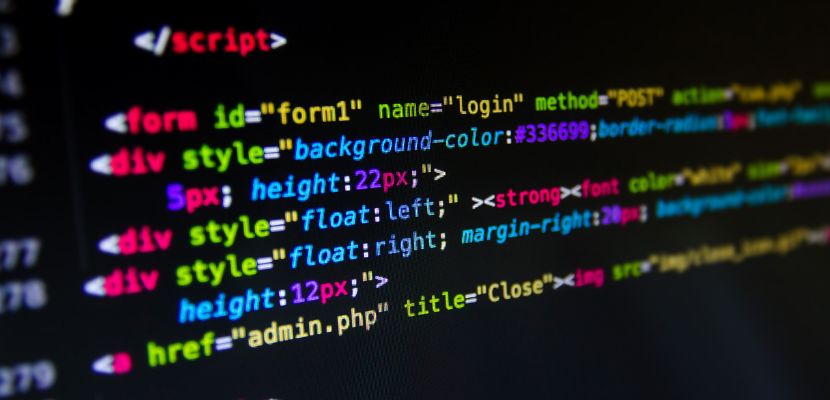C is a general-purpose programming language that provides low-level access to memory and efficient control over system resources.

What Is the C Programming Language?
The C programming language is a structured, procedural language developed in the early 1970s by Dennis Ritchie at Bell Labs. It was designed as a system implementation language for the UNIX operating system and has since become one of the most widely used programming languages in the world.
C provides a balance between high-level language features and low-level hardware access, making it suitable for both application development and system-level programming. The language emphasizes performance, efficiency, and direct manipulation of memory through pointers, which allows developers fine-grained control over how data is stored and accessed. Its syntax is minimal and consistent, encouraging modular programming through functions and supporting a clear, logical program structure.
Although C does not include features like object-oriented programming or garbage collection, its simplicity and power make it a foundational language in computer science and software engineering. Many modern languages, including C++, Java, and Python, draw heavily from C's syntax and programming paradigms.
C Programming Language Elements
The C programming language consists of fundamental elements that form the building blocks of any C program. These elements define how code is written, interpreted, and executed by the compiler, and understanding them is essential for writing correct and efficient programs:
- Keywords. These are reserved words that have special meaning in C. They are used to define the structure and flow of a program, such as int, return, if, while, and for. Keywords cannot be used as identifiers.
- Identifiers. Identifiers are the names used for variables, functions, arrays, and other user-defined elements. They must begin with a letter (A–Z or a–z) or an underscore (_) and can include digits, but cannot use C keywords.
- Constants. Constants represent fixed values that do not change during program execution. They can be integer, floating-point, character, or string constants, such as 42, 3.14, 'A', or "Hello".
- Variables. Variables are named storage locations that hold data which can change during the program's execution. Each variable must be declared with a specific data type, such as int, float, or char.
- Data types. C supports various data types to define the nature of data stored in variables. These include basic types like int, char, float, and double, as well as derived types like arrays, pointers, structures, and unions.
- Operators. Operators perform operations on variables and values. C includes arithmetic operators (+, -, *, /), relational operators (==, !=, <, >), logical operators (&&, ||, !), bitwise operators, and assignment operators.
- Expressions. Expressions combine variables, constants, and operators to produce a value. For example, a + b * 5 is an expression that evaluates based on the values of a and b.
- Statements. Statements are the instructions executed by the program. They include expression statements (e.g., x = y + 1;), control flow statements (if, for, while), and compound statements enclosed in braces {}.
- Functions. Functions are blocks of code designed to perform a specific task. Every C program must include a main() function, which serves as the entry point. Other functions can be defined by the user to promote code reuse and modularity.
- Preprocessor directives. These are instructions processed before actual compilation, beginning with #. Common directives include #include for header files and #define for macro definitions.
Features of the C Programming Language

C is known for its powerful and flexible features that make it suitable for system-level and application-level programming. Its design promotes efficient use of resources, portability, and structured code, which is why it remains widely used in modern software development. C features include:
- Simplicity. C has a minimal set of keywords and constructs, making it straightforward to learn and use. Its syntax is clean and concise, allowing developers to focus on logic and structure rather than language complexity.
- Portability. Programs written in C can be compiled and run on different hardware platforms with minimal changes. This makes C ideal for cross-platform development, particularly for embedded systems and operating systems.
- Speed and efficiency. C provides low-level memory access through pointers and direct manipulation of hardware, which allows for highly efficient programs. It is often used in performance-critical applications.
- Modularity. C encourages modular programming by allowing code to be broken into reusable functions and separate source files. This makes code easier to manage, debug, and extend.
- Rich library support. Although not as extensive as in higher-level languages, C provides a standard library with useful functions for I/O operations, string manipulation, mathematical computations, and memory handling.
- Structured programming. C supports structured programming constructs like loops, conditionals, and functions, enabling clear control flow and logical organization of code.
- Low-level access. C provides features like pointers, bit-level operations, and direct memory access, making it suitable for system programming tasks such as writing drivers or interacting with hardware.
- Static type system. Every variable in C must be declared with a data type, enabling the compiler to catch type-related errors early and optimize performance through strict type checking.
- Extensibility. C allows users to define their own data types and functions, making it possible to build complex data structures and abstractions as needed.
- Compilation and execution control. C provides fine-grained control over how code is compiled and executed, including control over memory allocation, stack management, and optimization settings.
How Does the C Programming Language Work?
The C programming language translates human-readable source code into machine-executable instructions through a process involving compilation and linking. This workflow is designed to produce efficient and portable binary executables that can run directly on hardware or within an operating system.
When a programmer writes code in C, the source files (typically with a .c extension) are first passed through a preprocessor, which handles directives like #include and #define. These instructions modify the source code before actual compilation by inserting headers, expanding macros, or conditionally including code segments.
Next, the compiler converts the preprocessed code into assembly or intermediate machine code, checking for syntax and type errors along the way. This phase turns high-level language constructs into low-level instructions, optimized for the target platform’s architecture.
The output of the compiler is typically one or more object files (with a .o or .obj extension), which are not yet complete programs. These files are then passed to a linker, which combines them with standard libraries and other dependencies (such as user-defined functions or the standard C library) into a single executable file. The linker also resolves references between functions and variables defined in different files.
Once linked, the resulting executable binary can be run on the system. During execution, the operating system loads the program into memory, initializes runtime components (such as the stack and heap), and begins execution at the main() function, which serves as the program’s entry point.
What Is the C Programming Language Used For?
The C programming language is used for a wide range of applications due to its efficiency, low-level access to memory, and portability across platforms. It is particularly well-suited for system-level programming, where control over hardware and performance is critical. Common use cases include:
- Operating systems. C is used to develop core components of systems like UNIX, Windows, and Linux, thanks to its ability to access memory and hardware registers directly.
- Embedded systems. It's ideal for programming firmware in microcontrollers, routers, and IoT devices, where minimal overhead and fine-grained control over resources are crucial.
- System software. C is commonly used to build compilers, interpreters, and device drivers that require close interaction with hardware and high execution speed.
- Performance-critical applications. Many database engines, graphics engines, and real-time systems are written in C to achieve low-level optimization and high performance.
- Scientific and technical computing. C is used in simulations, numerical computing, game engines, and financial modeling tools where speed and reliability matter.
- Education. As a foundational language in computer science curricula, C helps students learn about memory management, control flow, and system-level programming concepts.
Pros and Cons of the C Programming Language

The C programming language offers a powerful mix of performance, portability, and control, making it a popular choice for system-level and high-performance applications. However, its low-level nature also introduces certain challenges. Below is a breakdown of the main advantages and disadvantages of using C.
C Language Pros
C has remained a foundational language in software development due to its efficiency, control, and wide applicability. Its strengths make it especially suitable for system-level programming and performance-critical applications, and they include:
- High performance. C programs are compiled directly into machine code, resulting in fast and efficient executables. This makes C ideal for applications where speed and low resource usage are critical.
- Portability. C code can be compiled on different hardware platforms with minimal modification, making it highly portable across operating systems and architectures.
- Low-level access. C provides direct access to memory through pointers and supports bitwise operations, which allows precise control over hardware, which is essential for operating systems, drivers, and embedded software.
- Structured and modular code. C promotes structured programming by supporting functions, loops, and conditionals. Programs can be organized into modules and files, making large projects easier to manage and debug.
- Small runtime and minimal overhead. C does not require a large runtime environment or garbage collector, making it suitable for environments with limited system resources.
- Rich set of operators and built-in functions. C includes a wide range of operators and a standard library with essential functions for I/O, memory management, string handling, and math.
- Strong foundation for other languages. Many modern languages, including C++, Java, and Python, are influenced by C. Learning C helps developers understand fundamental programming concepts and memory management.
C Language Cons
While C is a powerful and efficient language, it also comes with several limitations that can make development more error-prone and time-consuming, especially for complex applications. Its minimal abstraction and manual resource management offer flexibility but require careful handling by the programmer. Here are its main downsides:
- Lack of memory safety. C allows direct memory access through pointers, but it does not perform bounds checking. This can lead to buffer overflows, segmentation faults, and other memory-related bugs if not carefully managed.
- No automatic garbage collection. Unlike higher-level languages, C does not automatically manage memory allocation and deallocation. Developers must manually free memory using free(), which increases the risk of memory leaks or dangling pointers.
- Limited standard library. The C standard library provides basic functions for I/O, math, and string handling, but lacks many built-in utilities found in modern languages, such as advanced data structures or networking features.
- No object-oriented features. C does not natively support object-oriented programming paradigms such as classes, inheritance, or polymorphism. While these can be simulated with structures and function pointers, it adds complexity and reduces code maintainability.
- Verbose and error-prone syntax. C requires precise syntax and declarations. Small errors, such as missing semicolons or incorrect pointer use, can cause undefined behavior or difficult-to-trace bugs.
- Poor support for modern abstractions. Modern programming features like exceptions, generics, or modules are not part of standard C. Developers must implement these manually or rely on third-party libraries, which can reduce portability and increase complexity.
- Platform dependency in some areas. While C is portable in theory, system-specific code (e.g., hardware registers, system calls, or compiler extensions) can limit true cross-platform compatibility without additional effort.
C Programming Language FAQ
Here are the answers to the most frequently asked questions about C programming language.
Is C Still Used?
Yes, C is still widely used today, particularly in areas where performance, efficiency, and low-level system access are critical. Despite being over 50 years old, C remains a foundational language in computer science and software development.
It is actively used in developing operating systems (like Linux and Windows components), embedded systems, firmware, device drivers, and real-time systems. Many modern programming languages and tools, such as C++, Python, and Go, are themselves implemented in C or based on its principles.
C is also a preferred language in academic settings for teaching core programming concepts, memory management, and systems programming. Its continued use in industry and education ensures that it remains relevant and valuable for both legacy maintenance and new development in performance-critical environments.
Is C an Easy Language?
C is often considered a simple but not easy language. Its syntax is relatively minimal and consistent, which makes it straightforward to learn the basics. However, mastering C can be challenging due to its low-level nature and lack of built-in safety features.
Unlike modern high-level languages, C requires manual memory management, careful use of pointers, and explicit error handling. It offers little abstraction from the hardware, which gives the programmer a high degree of control, but also makes it easier to introduce bugs like segmentation faults, buffer overflows, or memory leaks.
For beginners, C can be difficult because it demands a solid understanding of how computers work at the memory and processor level. But for those who want to learn how software interacts with hardware or who are interested in systems programming, C provides a strong foundation that makes learning other languages easier later on.
What Is the Difference Between C and C++?
Here is a comparison between C and C++ in a table:
| Feature | C | C++ |
| Paradigm | Procedural programming. | Multi-paradigm (procedural + object-oriented). |
| Language type | Low-level, structured. | Middle-level, supports abstraction and OOP. |
| Object-oriented support | Not supported. | Fully supports classes, objects, inheritance, polymorphism, etc. |
| Standard library | Limited (basic I/O, math, string handling). | Rich library support (STL, containers, algorithms, etc.). |
| Memory management | Manual using malloc() and free(). | Manual or automatic using constructors/destructors, new/delete. |
| Function overloading | Not supported. | Supported. |
| Operator overloading | Not supported. | Supported. |
| Encapsulation | Not available. | Available via classes and access specifiers. |
| Inheritance | Not available. | Supported. |
| Exception handling | Not built-in. | Built-in (try, catch, throw). |
| Namespaces | Not supported. | Supported. |
| Templates | Not supported. | Supported. |
| Use cases | Embedded systems, OS kernels, firmware. | Application development, games, GUIs, simulations. |
| Compatibility | C code can be used in C++ with some changes. | C++ is not backward-compatible with all C code. |